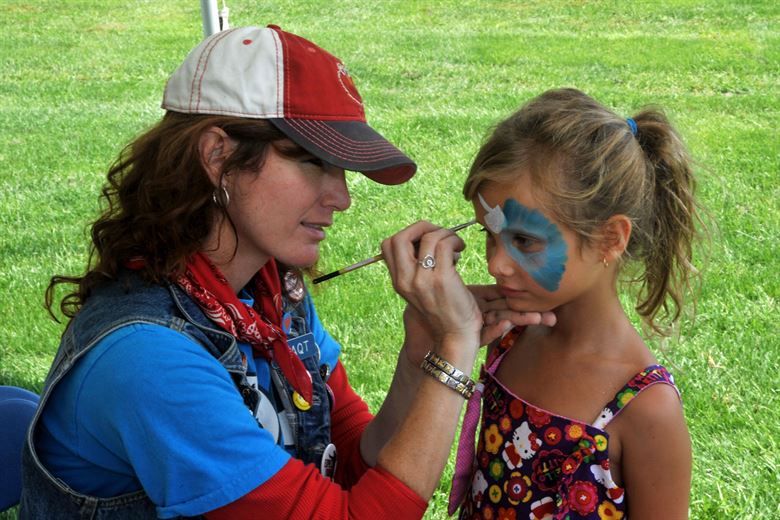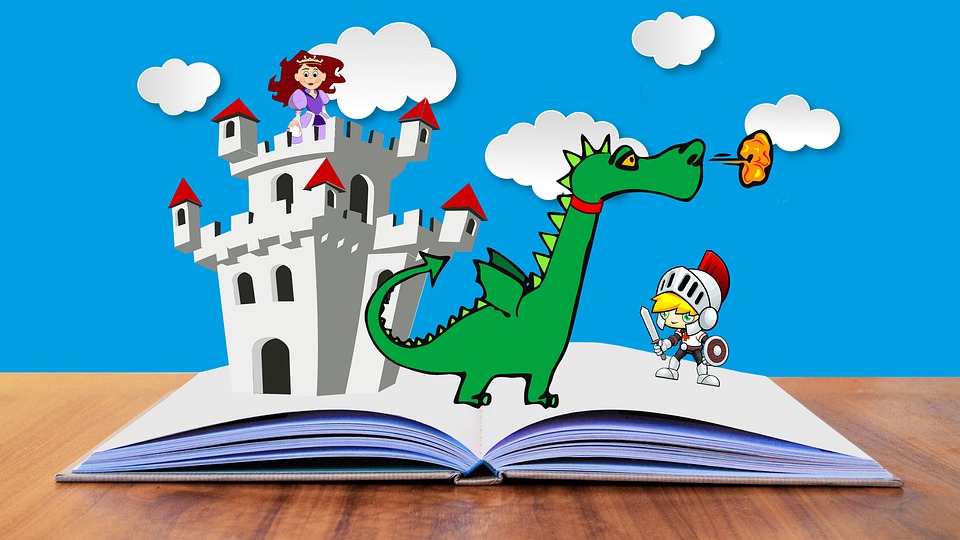
Ah, schools almost out. Feels good right? No more stressing about homework. No more schedules. Just summer fun, sun, and relaxing.
But wait!
You have heard of the "Summer Slide" right?
No, it's not a giant water park. It's the tendency for kids to slide backward in academics over the summer. Kids that were already behind get further behind. And the next year get's worse.
You might think that it takes a lot of discipline and pushing your kids over the summer to prevent the summer slide. That's not true. It can be easy and fun. And, best of all, your kids will never know your helping them become better students and develop a love of learning. If you are a little strategic about it.
Happy Happy Happy Dopamine Dopamine Dopamine
Dopamine is the happiness neurotransmitter. Our brain gets a little dose of it as a reward. The trick is setting up these rewards skilfully. To do that use the concept of Kaizen. The important element of Kaizen is to break things down into tiny goals. Then celebrate each win. This is an extremely simple yet an amazingly effective technique. What happens is that for every win you and your child celebrate they get a little dopamine hit. So do you.
Dopamine is addictive. That sounds bad, right?
If that addiction is pointing at the right thing it's actually a fantastic thing. And what we aim to point it at is the love of learning.
What neuroscience has found is that its not the size of wins that matter its the number. So all successes count. All wins develop the addiction. And getting more wins is just a matter of framing and noticing. Frame what constitutes a win. Then make sure to notice and celebrate. Celebrate however you want. A high five. A hug. The celebrations should be small as well. Just little acknowledgments of the win. But keeping them fairly consistent helps. The brain will be looking for that reward and seeking it out. Keep doing this enough and you are building a component of Grit. The ability to push through hard things.
So next, start thinking about what activities you can break down into little wins. I'm sure you'll get super creative and make this a habit. Let's get you going on some examples

Bake Me A Cake As Fast As You Can
Cooking is a simple way to work on math skills. You can use the measuring to ask questions. Base the questions you ask on the child's competencies. Make them slightly challenging but not overwhelming. Which brings up an interesting point.
The Ratio Of Wins To Try-Agains Is Important
Depending on your child's confidence level you'll want to adjust the challenge a bit. Generally, a ratio of 80 percent wins is pretty good. It's an amount that keeps the confidence levels up but keeps them on their toes. Ratios in this area ensure that your child is working at the edge of their competency level. Constantly stretching that competency level.
Contrary to popular belief 100% wins is not constructive. Not only does this not develop skills but it also can have some serious problems. Children don't learn that mistakes are a part of learning. They may develop an identity around never being wrong. This can lead to all sorts of problem behaviors such as avoidance tactics to avoid being wrong at anything.
If a child is having serious self-esteem issues then you may want to raise the ratio of wins slightly for a short time. Just don't do it too long and when your child does make a mistake frame it as a learning opportunity. You can say "Oh you've been doing great but here's an opportunity to get even better. Let's work on this together"
Baking
If your child is doing great at the basic measurements you can start doubling, tripling, halving, or whatever the recipe. So for example, if you are baking cookies you can ask how many cookies each person should eat. Add it up and figure out how much the recipe needs adjusting. Then pose questions such as "What if we invited so and so? How many cookies would we need?"
Play around with that and you can get lots of critical thinking and math in. And then you get to eat the cookies. Not bad.
Five Little Cookies In The Bakery Shop
Shining Bright With The Sugar On Top
Along Comes Johnny With A Nickel To Pay
He Buys A Cookie And Takes It Away
Four Little Cookies In The Bakery Shop...
Storytelling
Storytelling is an amazing developmental activity. Numerous studies have shown that it improves reading skills. Even though the child is not actually reading the story themselves.
If a child is engaged in the story it lights the brain. Visual centers light up to visualize. Auditory centers light up like a star bright. Working memory is developed. Imagination is developed. You just can't get much better than storytelling for brain development.
To have some more fun with this you and your child can work on the sound effects that might go along with the story. Think old time radio, they were amazing at creating sound effects. Come up with imaginative ways to create sound effects. This will keep our child engaged.
Ask questions about the story. Help your child with comprehension by asking questions. Ask "what ifs" to help them use their visual centers to imagine. Work on alternate endings together. Act out parts. Have fun with it. The more engaged the more the brain centers work and develop.
Key Takeaways:
Proprioception - This Is My Body
Here are my ears.
Here is my nose.
Here are my fingers.
Here are my toes.
Here are my eyes.
Both open wide.
Proprioception is our awareness of our body in space and it is highly correlated with learning ability. Proprioception happens in the hippocampus. this area of the brain is where spatial memory resides. It is also where logical thinking begins and is then passed over to the pre-frontal cortex. So developing this area of the brain by developing proprioception and other spatial skills have a profound effect on learning. We are truly at the beginning of understanding how and why proprioception has such an amazing effect on learning. That doesn't mean the knowledge hasn't been around for a while. Martial artists have used this principle for millennia. And the ancient Greeks used a spatial memory device to memorize the long speeches they were famous for. The technique is called the memory palace. As a matter of fact the phrase "In the first place..." came from that practice. Notice it is a spatial reference.
Not only is it correlated with learning ability it also has a reverse correlation with negative emotions. This is the core concept behind why mind-body techniques work to calm the emotions.
Mind-body is not just meditation. Meditation is actually an advanced technique and can be counterproductive if you are not ready for it. So in most cases not recommended for kids. Instead think martial arts, horseback riding, or learning dance moves. Many schoolyard games are highly proprioceptive. things like jungle gyms, hopscotch, jump rope, and even swings.
Pro-tip: Anything moving backward is super proprioceptive. It takes a lot of mental processing. NASA astronauts practice by walking up stairs backward and this exercise has even been shown to help with dyslexia. We accidentally discovered how powerful this was while teaching Kung Fu. There was a move which we put into the beginner curriculum. We thought the move would be really easy. It wasn't. Everyone struggled with it. It took weeks to master. But the great thing was once mastered it greatly enhanced proprioception and therefor other cognitive skills. It was so powerful that we broke it down and put it in the Learning Success System.
So do everything you can to help your child develop proprioceptive ability.
See, even climbing trees is brain developing!
Rhyming and Miming
You might have noticed that I've made at least a few nursery rhyme references in this article. Did you notice them?
Nursery rhymes are great for developing auditory skills such as auditory memory, auditory discrimination, and auditory closure. These skills are the foundational skills needed for reading. They are prerequisites for being able to follow instructions. These skills not being fully developed are, in most cases, at the root of dyslexia.
When you add rhyming to body movement then you have a power packed duo. You are developing auditory skills with kinesthetic skills. More than likely you'll use visual skills as well. So you'll be combining all three learning modalities. Visual, auditory, kinesthetic. Or VAK as it is often referred to. Combining these modalities is at the heart of most educational therapy programs. You can do it with simple playground games. Think clapping games like Pat-a-cake.
And if your child doesn't like silly schoolyard games then maybe some rap? Get creative
When summer rolls around kids and parents both are ready for a break. If you are strategic about how you have fun on the break you can have a great summer and still reap the rewards of being prepared for the next school year.
Do these simple techniques and you will help your child develop a love of learning so that they can slide into the next year with a smile. (And come out of it with a great report card)
Or even better yet, order the Learning Success System and have easy exercise emailed to you daily. Take 15 minutes per day and your summer will rock the next school year.

Do You Need help with a Learning Difficulty?
Our simple online analysis will help you get to the core of the problem and find the right solution for you.
Understanding how to help someone with a learning difficulty starts with understanding which micro-skills are affected. When you learn which of the micro-skills is the problem, you will then be on your way to solving it.
You'll also learn how to:
- Build confidence
- Enhance Learning ability
- Eliminate avoidance
- Build grit
You can get this analysis for free by filling out this simple form. This will help you get to the bottom of a learning difficulty and provide you with a solution. If you are ready to put this problem behind you click the button below and fill out the form.










